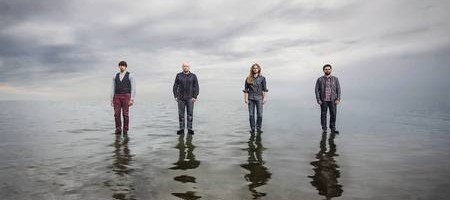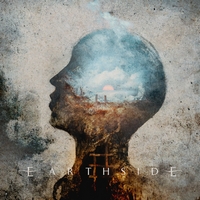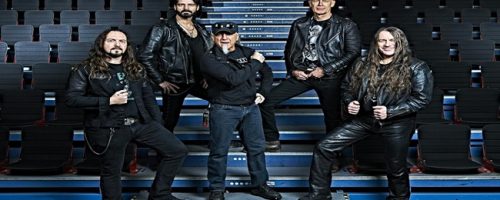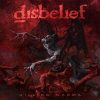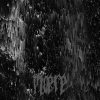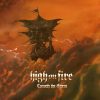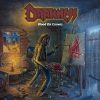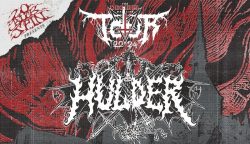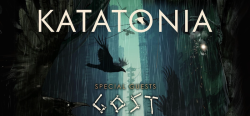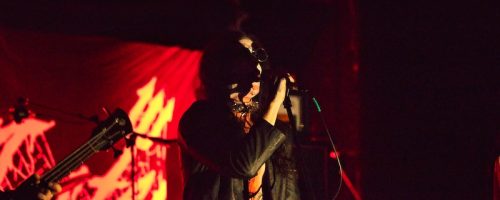Earthside – Turning Challenges into Opportunity
Thursday, 7th December 2023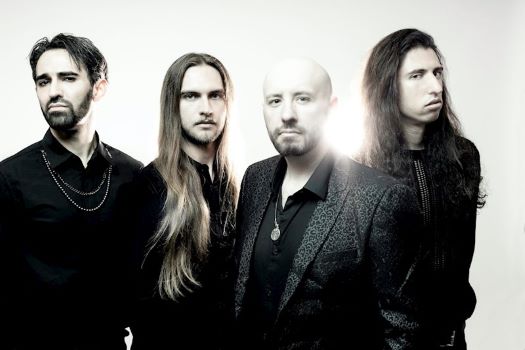
In the blink and you’ll miss it mentality of today, some bands continue to buck the trends and double down on their own vision. Earthside is a symphonic and progressive entity that first debuted back in 2015 with A Dream in Static. An album that was as gargantuan as it was intimate and emotive. Cooking up the right combination of ingredients takes proper time, so it was only last month that we got the proper follow-up in hand, that being Let the Truth Speak. An album that ups the ante instead of backing down, showcasing the band’s virtuosity as players but at the same time, tugging at the emotional core of the listener and inviting them into the world of Earthside. We sat down over Zoom with drummer Ben Shanbrom to talk about the lead up to their new album, their continued powerhouse listing of guests, the challenges of playing this sort of music live, and much more!
Dead Rhetoric: It’s been eight years since A Dream in Static. I know the band has been doing some things in between, so what have you been up to?
Ben Shanbrom:It was good of you to point that out. We were doing a bunch of interviews over in Europe when we were there a month ago for a few festivals. People, even within music journalism, have the assumption that it’s been eight years since you did that and you have just been sitting there with your thumb up your ass the whole time [laughs]. We put out the album, we toured on it, put out content around it. If you are giving it a good go of things, it takes a few years just to ‘do the thing.’ Then you come back and start writing.
The first record took us about five years to write, and by no means was this a quick process but it ended up taking a similar amount of time for a very ambitious record. A good chunk of which occurred during the pandemic and the lockdown. So it took quite a long time, and there are certain things that we are aware of that we want to streamline into a more efficient process going forward. But that’s where it kind of wound up for us. There were a lot of factors. I think we started up the process feeling like there were certain things that we were really happy with for the first record, but felt like there were some elements that weren’t exactly the way we wanted it.
Like, if we could produce the album ourselves – it would be straight-forward, we know what we want, and a couple of the guys spent a lot of time under David Castillo and Jens Bogran doing the first record so they kind of picked up certain things in the production process that they knew would be good going forward and they could work into their toolkit. But it ended up being way more than we could chew [laughs]! We had this whole vision for how we wanted this record to be more, in a sense. Things like a more ambitious orchestration and things like that. In different ways that went across the record – not like, having strings on one song and the rest of it is post-rock or modern metal orchestrations. It was way more than we could deal with.
The highlights, to come back to your point, even though we had a lot worked out that sort of went in a different direction and fell through by virtue of everything that has changed in the last few years, like the lockdown. We had a collaborator lined up, and then they fall into crippling depression and has to live with family. So it ends up being a different thing. We uncovered a lot of really cool collaborators that we wouldn’t have learned about it through this process, and I think that because of that it became a more interesting record. We went into this one with a similar idea of ‘lets work with our favorite people’ and it ended up being different.
Since we were now aware of all these different people and different worlds of music and not just rock/metal, we tried to find the most interesting and compelling people. Ones that maybe give you something that you hadn’t heard before in a song, rather than just let’s get the biggest rock star. That’s great [laughs], but I think it allows the record to have the statement of us already establishing ourselves. You already know us, so now we are able to introduce listeners to people and collaborators in interesting ways that they wouldn’t have heard about. So in a roundabout way, that’s kind of the silver lining there.
Dead Rhetoric: That does get to one of the things I wanted to discuss. You have again assembled a group of guests to perform with you on these tracks. Any of them particular highlights for you, not necessarily in terms of who they are, but what they were able to do for the record?
Shanbrom: It’s a little bit like asking which of your children is your favorite child. Some people will give you a direct answer on that. But yeah, in its own way, I am really far more than not, blown away by what we got out of these people. We were able to channel different strengths these people have. I think people know who Keturah is now, through us, and we love her voice. It’s so cool! It has this vibe of almost like a ‘70s Janis Joplin kind of singer, but in a modern way with her own idiosyncratic gravel. But she’s really cool on both songs. She nails the emotion, she has one of those voices that creates a mood. That’s a big thing to me.
People think an impressive vocalist can bang out these high notes or growl or something, but a lot of it is forced. Some singers just sing a note and it’s a mood. You are transported to this scene that only that person can take you to. I think that is so cool. In his own way, Pritam [Adhikary] who sings on “Tyranny,” he brings his own distinct mood. He has some gravely elements in his voice, and him actually singing in a different language accomplishes that in a very different way.
For me, personally, I will say my favorite highlight – having the background that I have with funk and soul music, it was my introduction to music in a sense. I knew about that stuff before I knew about rock music or pop. Its what my parents would play when we were in the car when I was like 3 or 4. But getting to work with bar none, my favorite singer in that world, Larry Braggs, was really sick. He had such a competitive spirit and really wanted to nail his parts. I think I wrote the song “The Lesser Evil” with two singers in mind without realizing it. A person for the low stuff and a person for the high stuff. Larry did an incredible job. It was such a cool thing to bring that background into Earthside’s music. The creative challenge of trying to make that work.
I also ended up working with my favorite singer in the regional area, from my high school days – this guy Doron Flake, who is in a band called Model Decoy right now. It’s a modern R&B/soul band but more electronic. He adds a lot of the deeper backing vocals in that track. He pairs off with Larry beautifully and it navigates two extremes: the brighter and more striking funk/soul style and deeper, richer, more R&B sounds. So between working with those two, I was pretty darn happy.
Dead Rhetoric: Getting back into the ‘in between time,’ discuss the video for “All We Knew and Ever Loved.” It got a number of accolades. How much of an undertaking was putting a video like that together?
Shanbrom: It was an undertaking! The guys that we discovered could do it, we kind of jokingly/seriously said, ‘you are almost too much like us.’ We have to get better at this – the perfectionism, we zoom in to micro-levels for days and weeks that absolutely no one will even notice or care about in the final mix/master. They are the same way. These two guys Maxine [Tiberghien] and Sylvain [Favre] – we discovered them. They are amazingly talented guys, and really cool dudes. We actually got to hang out with them for the first time when we were given a stop-over in France between festivals.
During the lockdown, as we were talking about, it was a period in which if you wanted to put out a music video, you had pretty limited options. You weren’t going to go to a warehouse and have a whole crew and everything. That was a no-no then. So we saw a Gojira video a few months before we started thinking about this [“Another World”], which was animated and thought it was really cool. We had a degree of skepticism going in, like if an animated video would hit the marks for us. For us, the emotion and mood are really the top thing. But that video kind of changed our perspective on that. It was capable, with the artform, to hit those marks. So we reached out to them, and over many many months, we created a 9-minute video that tells this thematic story and it was quite tricky. So much happens remotely now, but there were different time zones and stuff like that. We deal with that all over the place with our collaborators. Our manager is in Europe, and sometimes she is in Australia.
But it was an undertaking and a challenge, but it was also an important first piece of this record for people to see, hear, and experience, because one of the big mission statements was a firming up/doubling down on the cinematic angle of things. It was possible for people going into the first record to say, ‘okay, you call yourselves cinematic rock and yeah you have some orchestrations, but yeah, you are a progressive metal band.’ And that’s fine, they aren’t wrong, even if I think there is something more to it than that. But it’s not descriptive in terms of what makes us distinct from other projects.
We viewed this record as an opportunity to firm that stuff up and really apply cinematic moods and instrumentation in the presentation of it – to make those elements more of a defining feature. Having this short film experience, in a track that really is so about the mood and scoring of it. You don’t hear drums for like 5-minutes! So that was a big part of the driving motivation – to have something out in that time period that suited the music but also began to shape the mission statement of the album to come.
Dead Rhetoric: I read a bit of this on the promo sheet for the new album but it caught my attention. Discuss *I* versus *We* on the difference between the albums and your progression as a group?
Shanbrom: I think both records are both universal in their own ways, but the first record is something that almost everyone can relate to in some level. You are at this earlier phase of your life, and there’s this tension. You have somewhere you want to get to. You have some degree of accomplishment or a line in the sand that you are looking to get to on the map, but there’s an unclear element to it. You may not get there. So what does that mean if you don’t get there? What is sufficiently getting there vs not sufficiently? What are the forces that are preventing you from getting there? I think the song “The Closest I’ve Come,” the song with no lyrics, sums that up pretty well. It’s almost like you are never getting there – it’s like you can only see that point in the distance. You get to that point without realizing it and you still aren’t where you want to be. That’s all very inner-focused – it’s ‘you and your stuff.’
This record, I think part of it was us being a little older, but also some really big changes took place in the world and in the US. Just seeing how much that it wasn’t just the US. There were attitudes and misinformation and sweeping social changes happening on a worldwide scale. In grappling with those realizations, it’s not that your inner struggles aren’t important, don’t have meaning, or any universality, but there can also be a way that ‘hey, this really important thing that happened to me on Tuesday that I’m upset about or this argument I had with someone’ isn’t quite as important compared to whats happening in all these countries. These overseas countries having all this fallout, that seems like something pretty big.
It is only something I am a passive participant in – I’m an ant compared to it. Maybe I need to, as an ant, have more self-reflection about the role that I play, or what I need to be doing/talking to/learning more about to have a different perspective. Those kind of questions started to bloom much larger for us. I think people in current society/online culture – we are hyperconnected but we are also isolated from each other. Even in our day to day, we become more hardened in what we believe is true or not true and you can start to develop this idea of ‘its me against the world.’ If that’s the case, then maybe I need to do something radical. You can go into some really dark places.
But if you start to see ‘oh wow these people are dealing with some sort of depression, or this other country or even 30 mins away from me.’ You can start to see the connecting threads there and the empathy you might have for a person in those experiences and how that fits into what you have experienced. I feel like maybe that’s the more productive and meaningful connection to have – seeing that panoramic view. I think we tried to musically paint as many of those vignettes as we possibly could. Both through the styles of music and the people we collaborated with and the stories that they had to tell. I think that was a big part of how we tried to convey that ‘we’ on the record.
Dead Rhetoric: What’s your process in making longer, 10-minute plus songs? What makes you say that a song needs to be 13-minutes as opposed to say, 4.5? What are the guidelines, if there are any?
Shanbrom: To give you a window into the process, there is a diversity of how songs come together and who is involved. This was the same with A Dream in Static. There were a few compositions that were practiced and jammed out, based on if we have some sort of cool element like a good beat and putting a nice chord progression over it and just slowly forming something that way. I think a lot of the instrumentals on the first record came together like that.
The vocal songs tended to be based on an idea. Jamie [van Dyck] had “Mob Mentality,” that was his song, Frank [Sacramone] had “Contemplation of the Beautiful” and “Entering the Light,” which was a song we released as another project. Those songs were more fringe-y as far as the use of orchestra or being more new age-y, in Frank’s case. “Crater” was my contribution, which ended up being more like a catchy rock/metal song with just like weird time signatures, for me as a Tool fan, I guess that just kind of came out [laughs]. There was that diversity that carried over to this record. But with that being the case, what I think it all comes down to is storytelling and feelings we are trying to convey.
One thing that I thought was interesting that came up in some of the earlier interviews we started to do for this record, was that people were saying that the music was really technical and we were being asked how we would write technical music. For us, that’s certainly not the thing. We are appreciative if people think its really cool. I have a lot of parts I have to practice, so it’s cool to get a nice pat on the back. But the perspective that I don’t think people have very often with music that happens to be technical or songs that have to be long – you can view it as ‘musicianship as sport,’ or you can view it as a particular scene or story that the artist is trying to get across. That is pretty much always the case for us.
I like to push myself as a player, but there’s a way that a very chaotic part, that’s very jagged and angular with the rhythms, can drum up certain primal emotions. Like a feeling of someone experiencing their world being in upheaval or an attack, or a feeling of oppression that you don’t get if things feel a bit more square. In telling the story of a song, you can kind of come in right away with a band, and you are at a certain level and carry it out for five minutes, it may have a very different effect than this thing that develops at a slower pace or has these vibe or movements that carry you through. The song that I think of on this record is “Watching the Earth Sink,” that song I think, more than we have ever done, is fully-through composed where nothing is repeating. You get this world, then the next, and then the next.
I think everyone sees it differently, and I don’t want to tell people what they should be thinking about listening to it, but there’s a place where it starts from this melancholic area, then there is almost this world of dreamy ‘through an old projector’ escapism. It’s warm, there’s this sort of artificial sunlight that you are under. Then you are pulled back to the reality of things that are more somber. That escapism, running from what’s in the background, builds and builds and then suddenly we are over the line of ‘what can be taken back.’ Things have been changed irrevocably and there is no turning back now. The world will be forever different. There’s a reflection after it where I’m not doing a lot. It’s just piano and a building back up to something that ends the world, but somehow there’s still half an album after that [laughs]. So there’s a bit of storytelling to it, and feelings that we are trying to get across. As the listener in the story, you join in the story, and where you leave off with it.
Dead Rhetoric: What sort of challenges does writing music like this face when you start to play it live?
Shanbrom: There are many challenges. I think the number one challenge is that there is no one right way to do it. There’s no ‘you get a gold star, everyone’s happy’ way to do it. For us, the gold standard, the most important thing, is that we offer the song itself. We immortalize it so you can listen to it now and indefinitely into the future. I think we put a lot of weight on that and being perfectionists there, I think going forward I think we need to let go of it for our own sanity as much as anything else. But I think we often want to do whatever is going to be the most ‘wow’ thing for the song. By ‘wow,’ I don’t mean like ‘wow, I didn’t think they were going to do that there,’ but something that grabs you or pushes the right emotional buttons. It might be adding another instrument here or there, but those are the extra mile we want to go – certainly with singers and ensembles that is definitely the case.
But as you pointed out, that makes for many challenges or extra considerations in a live environment. What we try to do is to make the singers and the collaborators a part of the immersive experience that we as a band – we want to put on a show that’s more of an experience for people. The biggest influence that we have there, is Han Zimmer and the Han Zimmer live experience. We saw him in concert fairly early into the album process and we were blown away. He has these really interesting stage dynamics where he might have a couple of percussionists and the lights shooting back and forth as you are hearing the one percussionist you see the light shoot to the other side. That kind of inspired the “All We Ever Knew and Loved” drum trade-off.
His concerts are really an experience. There’s brilliant imagery and lighting and that sort of stuff, and we are not there yet. But that’s what we are looking to put on for people. We also want to bring the electricity and the kinetic aspects of a high-energy rock/metal kind of concert. We also want to have visual elements where the singers and collaborators are seen on stage alongside us, but having it all merge with the lighting and create a more immersive experience than what you might get from a normal rock/metal concert. We are trying to basically see it as a challenge that we can turn into an opportunity.
Dead Rhetoric: What are your plans for next year?
Shanbrom: Really, we are going out and doing ‘the thing.’ Going out and bringing this material to as many people in as many ways as we possibly can. Be it through a lot of touring – I think we have plans for a lot: in North America as well as Europe. If we have other opportunities outside of those, that would be really cool too. We certainly have a lot of people that we have worked with in other places in the world. I think that for as much as we will talk about the composition being the main thing, we also really do love playing live.
As a drummer, I am always reminded when we have a tour or festival of how much fun it is. It’s stressful as hell, but music is meant to be shared, even if it’s long and complicated and says something nuanced. There’s a special connection that you get with people in that environment that you just don’t get from anything else. That’s a big thing. We also look forward to people being able to wrap their heads around this record. It’s a lot – we put everything we possibly could and more into it. I hope that for more people, for me as a listener, the records that I keep going back to that transformed my world, like a few Tool records, Opeth, and some Porcupine Tree, they gave me an experience of listening and there’s this process that you begin in listening to the record that your brain putting the connections together.
To me as a listener, that’s the most exciting and fun thing about music. That experience of piecing the puzzle together and experiencing each track – having your own impression of it and letting it move you in different ways. Then coming back to it at a later time and having a totally different experience with it. I hope that this record can give people, in an era for such ‘churn, churn, churn, content, content, and now throw it in the dump,’ I hope that this record, which clearly gave no fucks about any of that [laughs] can give people a special and lasting experience. In our current era, there is a need for deep reflection and slowing down and enjoying things at your own pace. I hope it gives people that. I also hope our live show does that too.
Earthside official website
Earthside on Facebook











